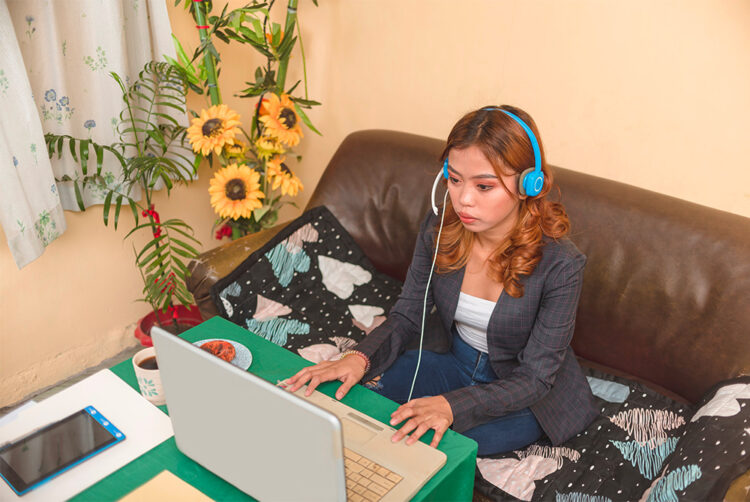Hybrid working: what comes next?

Opinion
With many companies now settled into a hybrid working pattern, is this the new model? Or are we set for another wave of change?
If you’ve not seen the insights revealed by the research “The Work/Place: London returning”, then you really should. The research sought to understand how Covid-19 has altered the way Londoners now work and what the future of employment in the city will look like.
It found that just over a third (37%) claimed to work from home at least one day a week on average before the pandemic. Now roughly double this proportion – 75% – report doing so in the past four weeks.
Based on quantitative and qualitative research with London workers by the Policy Institute at King’s and the King’s Business School, the study was launched at an event that addressed important workplace debates. Panellists debated topics such as ‘Has working from home increased or decreased productivity?’ and ‘What does hybrid working mean for the capital?’.
However, the study raised as many questions as it answered. The participants in the panel debate were at pains to underline that hybrid models are set to evolve further. The consensus was that we are likely to see a period of iterative change as companies continue to evolve their approach, testing and learning based on staff feedback and broader market forces.
Employees have the negotiating power… for now
One of the big forces at play is labour market trends. Employees currently have the power of negotiation when it comes to flexible working. This is evident in the plethora of industry job postings outlining flexible working policy in an effort to attract new talent. Any shift in labour market trends could impact here — this is one for recruiters and job hunters to watch. Although, of course, job specs only translate into staff retention when the culture matches up to the reality.
Cultural considerations are paramount. The rise of the ‘chief engagement officer’ ushered in an era where dictats from management were already being replaced by programmes of staff consultation, opening up decision making to the right groups within business to drive change from within. Sustainable change can only be created via continuous employee engagement, not coercion and static policies. The value to businesses that engage in these organisational cultural practices is improved staff satisfaction and retention.
This was a point raised by Julia Hobsbawm, entrepreneur and author of the The Nowhere Office: Reinventing Work and the Workplace of the Future, who said “work is not working’, citing PWC research that reveals a third of us aren’t happy with our jobs or the way we are managed.
Following this, she made the case for role by role, demographic by demographic tailored approaches to hybrid working declaring that we are in an ‘imaginative and iterative phase’. There needs to be better acknowledgement from both an employee and company perspective that one size does not fit all.
Younger staff are more likely to be disadvantaged by home working because of their living circumstances, as well as differing training and development needs — which some would argue might be better served by spending facetime with more experienced colleagues. There are different and nuanced considerations when it comes to achieving parity by age and ethnicity. Some employees find Zoom to be a great equaliser, but it is not ideal for conflict resolution. Working from home suits returning mums and dads, but care needs to be taken that any lack of presence at office HQ doesn’t exclude them from progression opportunities.
Furthermore, some types of work and or role are more suited to home working. Most would acknowledge that delivering tangible outputs is enhanced by avoiding the distraction of the office, and panellists were dismissive of the Borris perspective that home office working can fall victim to the call of the fridge and a strange personal obsession with cheese.
Burnout is on the rise
One of the most interesting issues raised at this event was the debate around productivity. As with many areas of contention, how you measure it is key.
Productivity measured by the hour may show declines for some staff as they multitask at home on occasion. Productivity over a day may benefit from longer working hours when the commute is removed.
Productivity measured in this way, however, ignores longer term productivity metrics such as innovation. Allen Simpson, managing director at tourism agency London & Partners, raised the question that it would be interesting to look at the London trend for patent registrations in five years time. He pointed out that businesses flock to London in the hope that they will collide with other businesses, acknowledging that proximity and serendipity can drive innovation.
Whatever the way forward for employees and employers, most agree that the days of 100% office based working are gone. The pandemic has shown us that working from home can work. It’s unlikely that the naysayers will be able to halt the march of technological innovation that Covid has unlocked.
However, it’s not all good news for hybrid working — burnout is on the rise. According to Michael Clinton, professor in work psychology at King’s Business School, home based workers left to their own devices are not great at boundary setting.
Poor mental health is a natural consequence. It is critical that as new ways of working continue to evolve, businesses work harder at supporting their staff.
 Anna Sampson is the founder of Anna Sampson Consulting and was previously insight and strategy director at magazine marketing body Magnetic.
Anna Sampson is the founder of Anna Sampson Consulting and was previously insight and strategy director at magazine marketing body Magnetic.




